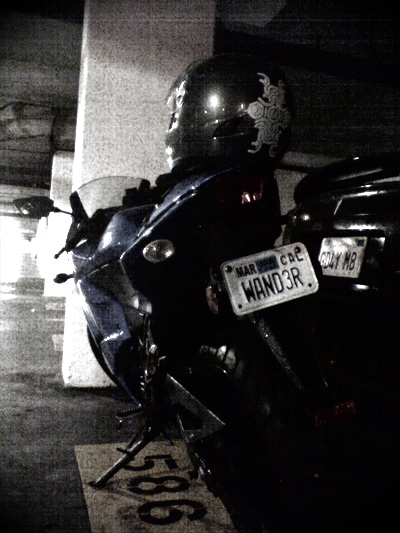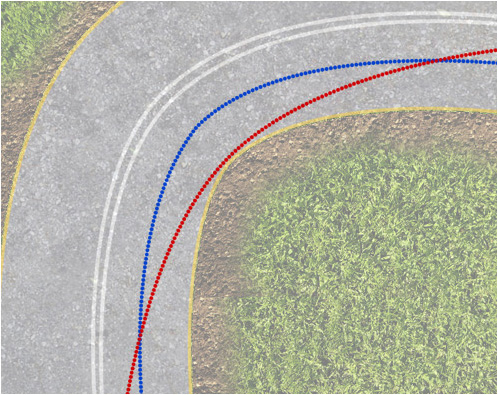Short story shorter, the forecast called for rain today but it was dry in the morning and I wanted to ride so I could pick up (and affix) the personalized license plate waiting for me at the DMV. The weather was clear all day…until I left work to go home.
I didn’t realize it was pouring rain until I stepped outside the office at roughly 7:00 PM. I ran back inside to wrap up my laptop in plastic bags to keep it dry inside my backpack and by the time I was on the bike and ready to ride the cold rain turned to pelting hail. This’ll be fun.
The hail was pretty heavy, but as it had just started there wasn’t much build up on the road, just barely enough to leave tire tracks behind me. I kept very slow, taking to extremes advice I’d read regarding riding in bad weather. Smooth with everything, especially the brakes. On the morning ride into work, though it wasn’t raining the roads were wet and even careful braking at under 5 mph was enough to lock up my rear for a quick second before stopping.
I usually ride home via surface streets, but tonight opted for the freeway for a handful of reasons: 1) The freeway is about ten minutes faster; 2) My usual route takes me over a mountain that’s cold enough when I’m not soaking wet; 3) More traffic on the freeway means less chance for hail to grow into significant piles; 4) There’s not much resembling turns on the freeway, which is quite good when you’re afraid to lean over (I was). I wasn’t concerned about speeds–San Francisco traffic slows to a relative crawl when the roads get wet, so I didn’t get a chance to exceed 55 mph until after the hail had gone back to wherever it’s been hiding these past five years in which I never saw hail in the Bay Area.
When the downpour was thickest, I tried to follow in the tracks left behind by cars ahead of me. As the speeds picked up, it was harder to do so while leaving a safe buffer between the Ninja and the automobiles. As suggested earlier, stopping in the rain can prove a delicate operation, so I left plenty of stopping distance–and indeed distance all around me–to minimize any need for abrupt maneuvers.
Picking efficient racing lines is a fun game when weather permits speed, but also a useful skill when traction is scarce. While you’re limited to following the lines of the road in a car, a motorcycle’s narrow track lets you carve wider arcs through the same bends by using the full width of your lane. In racing, using the full width of the course lets drivers/riders go faster by effectively extracting the maximum amount of traction possible through the curve. While going fast shouldn’t be a goal on wet roads in traffic, maximizing traction should be near the top of your short list of immediate concerns. A sharp turn requires more lean and leads to more risk of a slip and fall. A blunt corner needs less lean and keeps you as straight as possible, even through a bend, both helpful qualities in low traction conditions.
I made it home okay, no falls, no slips. My laptop still works; turns out the backpack doesn’t get a chance to gather much rain as my body and face absorb most of it when moving forward. I might not have had the dubious pleasure of riding in the hail had I not rushed to the vanity plate, but the completed bike and riding experience were worth the squeeze.

